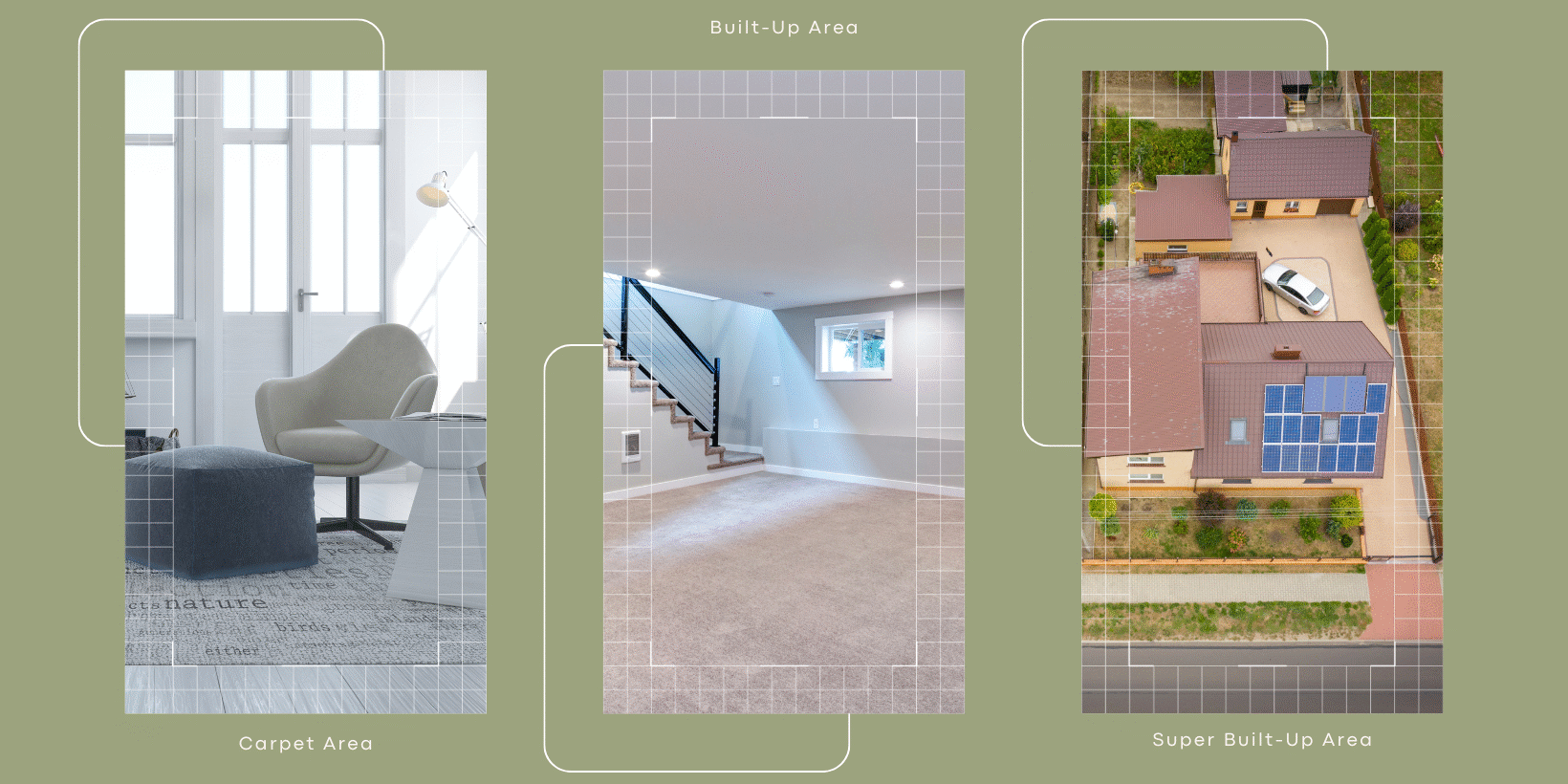The Ultimate Guide to Understanding Carpet Area, Built-Up Area, RERA Built-Up Area, and Super Built-Up Area
Navigating the world of real estate can be overwhelming, especially when presented with a ton of technical terms like carpet area, built-up area, and super built-up area. Understanding these concepts is crucial for making informed decisions when buying or selling property. This comprehensive guide will breakdown these terms, equip you with the knowledge to confidently navigate the real estate market, and ensure you get the best value for your money.
Jumping onto Key Definitions:
1. Carpet Area:
The carpet area is the most fundamental measurement, representing the actual usable space within the apartment’s walls. This excludes the area covered by external walls, shafts, and exclusive balconies or terraces. It essentially reflects the area where you can place your furniture and move around freely. Imagine it as the interior space you can walk and utilize in your daily life.
2. Built-Up Area:
The built-up area encompasses the carpet area and additional elements within the apartment, including:
- Internal walls
- Exclusive balcony or terrace area
- Exclusive corridor area (if any)
Think of it as the total space enclosed within the apartment’s walls, encompassing both usable and non-usable areas.
3. RERA Built-Up Area:
Introduced by the Real Estate Regulatory Authority (RERA), the RERA built-up area aims to standardize and enhance transparency in the real estate market. It’s similar to the built-up area but excludes the area of the exclusive balcony or terrace. This ensures a more consistent and comparable measure of apartment size across different projects.
4. Super Built-Up Area:
The super built-up area is the most comprehensive measure, incorporating the built-up area and a proportionate share of the common areas within the building. These common areas include:
- Lobbies
- Staircases
- Elevators
- Swimming pools
- Gardens
- Gyms
- Parking spaces
Essentially, the super built-up area represents the total footprint of the property, including both individual and shared spaces.
Comparison of Different Area Measurements:
| Area Measurement | Definition | Exclusions | Inclusions |
|---|---|---|---|
| Carpet Area | Usable space within apartment walls | External walls, shafts, exclusive balconies/terraces | Internal walls |
| Built-Up Area | Total space within apartment walls | None | Carpet area, internal walls, exclusive balconies/terraces, exclusive corridors (if any) |
| RERA Built-Up Area | Standardized version of built-up area | Exclusive balconies/terraces | Carpet area, internal walls, exclusive corridors (if any) |
| Super Built-Up Area | Total footprint of the property | None | Built-up area + share of common areas |
Understanding the Differences:
Each area measurement serves a specific purpose and provides valuable insights into the property’s size and value. Understanding these differences is crucial for making informed decisions:
- Carpet area: This is the most accurate representation of your actual living space and plays a significant role in determining the apartment’s price.
- Built-up area: This provides a broader perspective on the apartment’s size, including areas like internal walls and balconies.
- RERA built-up area: This standardized measure ensures transparency and helps compare apartments across different projects accurately.
- Super built-up area: This offers a comprehensive picture of the entire property’s footprint, including both individual and shared spaces.
Impact on Real Estate Transactions:
Understanding these area definitions significantly impacts how property prices are determined. Developers typically base the price on the super built-up area, which includes a portion of the common areas. Therefore, it’s crucial to compare properties based on the same area measurement to ensure fair and accurate evaluation.
Case Study:
Let’s consider an apartment advertised with a super built-up area of 1500 sq ft. The carpet area is 1000 sq ft, and the remaining 500 sq ft represents the share of common areas. This implies that approximately 33% of the total area is dedicated to shared spaces like lobbies, elevators, and swimming pools.
Practical Tips for Buyers:
- Always clarify the area measurement used in advertisements and property documents.
- Calculate the carpet area to understand the actual usable space.
- Compare properties based on the same area measurement.
- Consider your lifestyle and space requirements when evaluating different options.
- Don’t be afraid to ask questions and seek clarifications from builders or real estate agents.
If you are on the look out for apartments across prime locations in Chennai click here







